Spine
Anatomy
-
Cervical Spine Anatomy
The spine, also called the back bone, plays a vital role in stability, smooth movement and protection of the delicate spinal cord...
Know More -
Thoracic Spine Anatomy
Thoracic spine is the central part of the spine, also called as dorsal spine, which runs from the base of the neck to the bottom of your rib cage...
Know More -
Lumbar Spine Anatomy
The spine, also called the back bone, plays a vital role in stability, smooth movement and protection of the delicate spinal cord...
Know More
Conditions
Cervical Conditions
-
Cervical Radiculopathy/Myelopathy
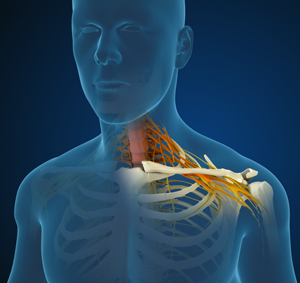
The spine, also called the back bone, is designed to give us stability, smooth movement, as well as providing a corridor of protection for the delicate spinal cord.
Know More -
Neck Pain

The first 7 vertebral bones on the spinal column form the cervical spine and are in the neck region. The neck bears the weight of the head, allows significant amount of movement, and less protected than other parts of spine.
Know More -
Cervical Stenosis

Cervical spine refers to neck portion of spine, and cervical spine conditions may result from overuse injuries, trauma and certain diseases.
Know More -
Cervical Disc Protrusion
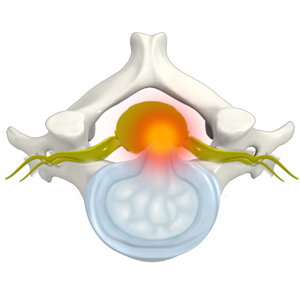
Cervical disc protrusion, commonly known as disc bulge occurs when the spinal discs and associated ligaments are intact, but may form an outpouching that will press on the spinal nerves.
Know More -
Cervical Fracture
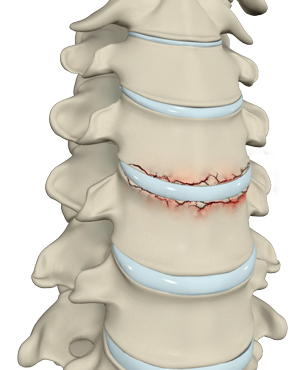
The neck is made up of seven tiny bones called cervical vertebrae (C1-C7). These are protected by spongy vertebral disks present between them and supported by ligaments
Know More -
Whiplash

Whiplash is a soft tissue injury to the neck, usually caused by sudden forceful jerk commonly occurring because of an automobile accident, sports injuries, or an accidental
Know More -
Cervical Degenerative Disorder
Cervical degenerative disc disease (DDD) is a misnomer as it is not a disease as such but a condition that affects the strength, resiliency and structural integrity
Know More -
What’s New in Cervical Herniated Disc
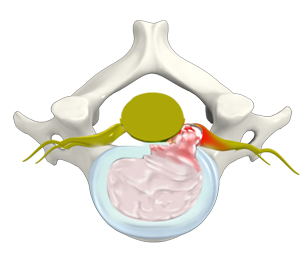
Herniation of a disc is an anomalous spine condition characterized by leakage of the inner contents of the intervertebral disc, due to cracks in its outer wall.
Know More
Thoracic Conditions
Fracture of the Thoracic and Lumbar Spine
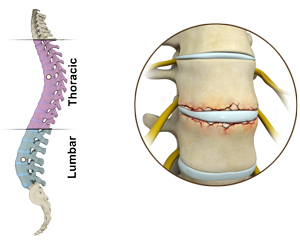
The backbone is made of small bones arranged from the neck region down to the buttocks, one above the other.
Know MoreDISH (Diffuse Idiopathic Skeletal Hyperostosis)

Diffuse idiopathic skeletal hyperostosis (DISH) is a condition commonly affecting the spine characterized by calcification (bony hardening) of ligaments, tendons and joint capsule insertions.
Know More
Lumbar Conditions
Lumbar Radiculopathy
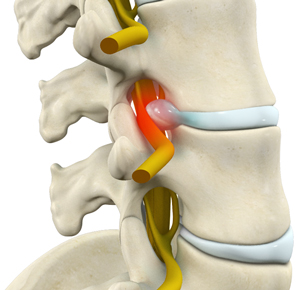
Back pain is a common condition affecting approximately 80% of the population at some point in their lives.
Know MoreLow Back Pain
Low back pain can be disabling; however, most cases heal with time (2-12 weeks) and with conservative therapy.
Know MoreHerniated disc (Lumbar)
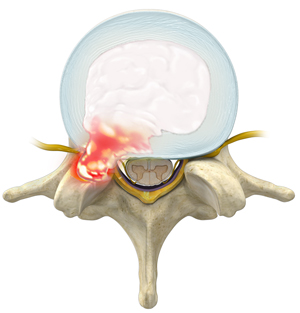
Herniated disc is a condition in which the outer fibers (annulus) of the intervertebral disc are damaged causing the soft inner material of the nucleus pulposus to rupture out of its space.
Know MoreLumbar stenosis
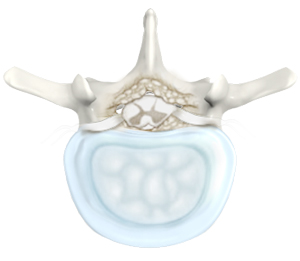
Lumbar stenosis is the compression of spinal nerves caused by narrowing of spinal canal and it is one of the common causes of low back pain.
Know MoreLumbar Disc Herniation
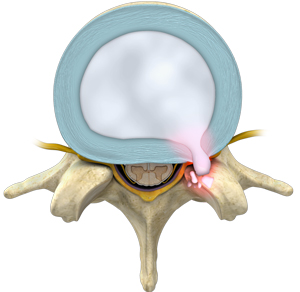
Lumbar disc herniation is the most common cause of low back pain and leg pain (sciatica). The lumbar intervertebral discs are flat and round, present between
Know More
General Conditions
Spondylolysis
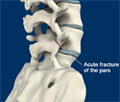
Spondylolysis is a stress fracture of vertebra that may progress into spondylolisthesis, a condition of displacement of vertebrae from the spinal column.
Know MoreVertebral Compression Fractures
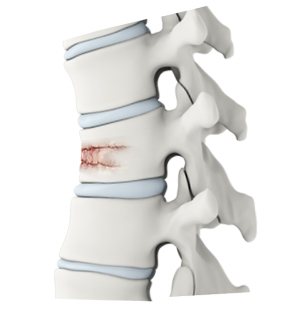
Back pain is an indication of stress fractures known as vertebral compression fractures. Vertebral compression fractures occur when the normal vertebral body of the spine is squeezed or compressed to a smaller height
Know MoreSpine Trauma

Spine trauma is damage to the spine caused from a sudden traumatic injury caused by an accidental fall or any other physical injury.
Know MoreBack Pain

Back pain or backache is the pain felt in the back that may originate from muscles, nerves, bones, joints or other structures in the spine.
Know MoreSpondylolisthesis

Spondylolisthesis is the displacement of vertebral disc from the spinal column. Outward (forward) displacement is termed as anterolisthesis and inward (backward) displacement is termed as retrolisthesis.
Know MoreSpine Deformities
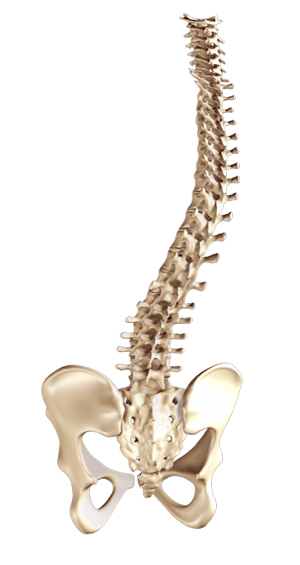
The Spine or backbone provides stability to the upper part of our body. It helps to hold the body upright. It consists of series of irregularly shaped bones appearing in a straight line.
Know MoreFacet joint Arthritis
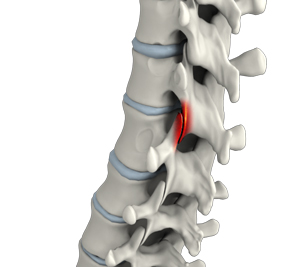
Facet joints, also called zygapophyseal joints are located at the back of the spine which connects the vertebrae together.
Know MoreSciatica

Sciatica is a painful condition caused by the irritation of the sciatic nerve. The sciatic nerve is the longest nerve in our bodies.
Know MoreScoliosis

Scoliosis is a condition characterized by abnormal curvature of the spine causing a deviation to one side. It causes a physical deformity making the spine look like the letter
Know MoreDegenerative Disc Disease
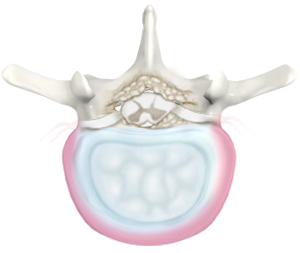
Degenerative disc disease (DDD) refers to gradual deterioration of the intervertebral discs between the vertebrae.
Know MoreSpinal Tumors

Spine tumor is the abnormal growths of uncontrolled tissues or cells in and around the spinal cord. Tumors can either be cancerous (malignant) or non-cancerous (benign).
Know MoreCauda Equina Syndrome
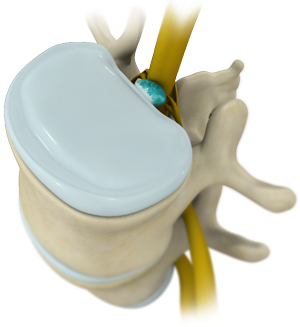
Cauda equina syndrome is an emergency condition characterized by persistent severe low back pain caused by compression of a bundle of spinal nerves (cauda equina)
Know MoreKyphosis
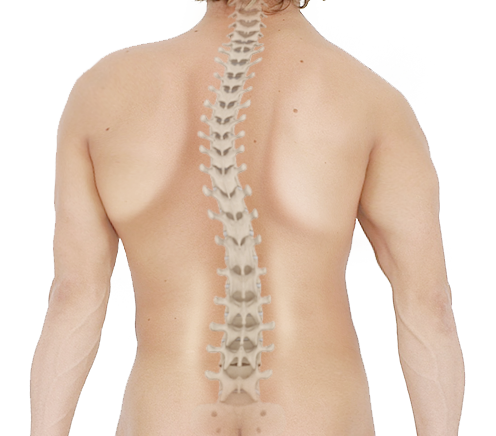
Kyphosis is a condition of abnormal curvature of the spine that causes rounding of the upper back or a hunchback.
Know MoreScheuermann’s Disease
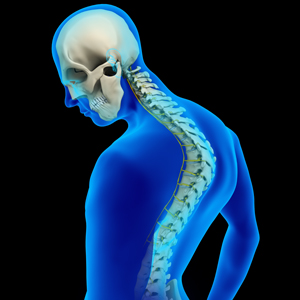
Scheuermann’s kyphosis is a deformity of the spine that develops during growth. It can be considered as increased kyphosis. Kyphosis is the C-shaped curving of the spine and is also known as hunchback.
Know MoreSacroiliac Joint Dysfunction
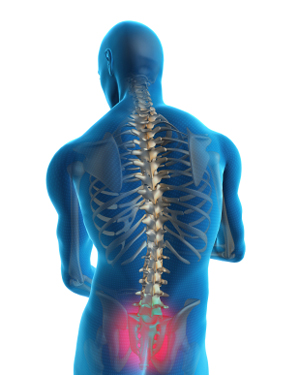
The sacroiliac joint is one of the large joints in the body and is formed by the connection of the sacrum and the right and left iliac (pelvic) bones.
Know MoreChordoma
Chordoma is a rare, slow growing malignant tumor that develops in the spine and skull bones. It is thought to form from the remnants of the notochord
Know MoreAdjacent Segment Disc Disease
Spinal fusion surgery involves the fusion of two or more vertebral bones, and is a standard of care for spinal deformities and conditions such as radiculopathy
Know MoreAnkylosing Spondylitis
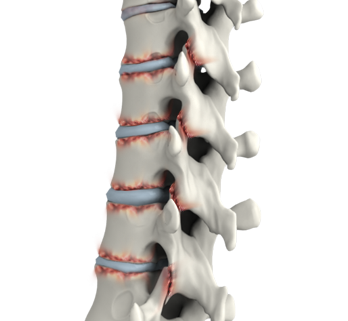
The term ankylosis stands for loss of mobility of the spine, whereas spondylitis means inflammation of the spine.
Know MoreSpondyloarthropathies
Spondyloarthropathies are a group of chronic inflammatory diseases of the spine and joints. The most common spondyloarthropathies include ankylosing spondylitis,
Know MoreLordosis
The spine forms natural curves at the neck, torso and lower back, which allows it to absorb shock and hold the weight of the head.
Know More
Treatments
Surgical Treatment for Spine Conditions
Cervical Treatments
Cervical Disc Replacement
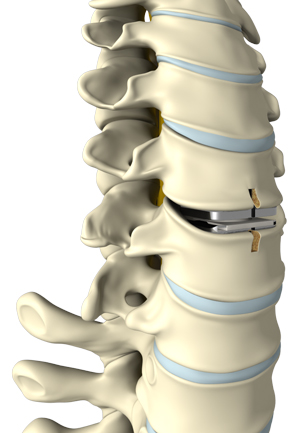
The cervical spine is in the neck region and consists of seven bones arranged one on top of the other. Cushioning tissue called vertebral discs located between the vertebrae act as shock absorbers, allowing easy movement of the neck.
Know MoreCervical Laminectomy
A cervical laminectomy is an operative procedure of removing the bone at the neck (cervical spine) region to relieve pressure on the spinal nerves.
Know MoreArtificial Cervical Disc Replacement

Artificial cervical disc replacement is a spine surgery to replace a degenerated (deteriorated) disc in the neck with an artificial disc. Disc degeneration reduces the height of the disc and may cause a herniated disc.
Know MoreCervical Foraminotomy
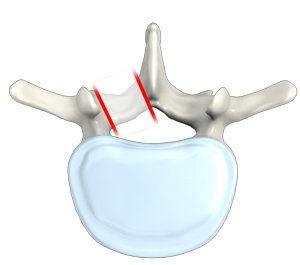
Cervical foraminotomy is an operative procedure to relieve the symptoms of pinched or compressed spinal nerve by enlarging the neural foramen, an opening for the nerve roots to exit from the spine and travel throughout the body.
Know MoreCervical Spine Fusion
Your spine consists of a spinal cord supported by a series of interlocking bones called vertebrae. The cervical spine is the upper part of the spine situated in the neck region.
Know MorePosterior Cervical Fusion
Posterior cervical fusion (PCF), a surgical procedure performed through the back of the neck, involves joining or fusing two or more damaged cervical vertebrae.
Know MorePosterior Cervical Laminectomy and Fusion
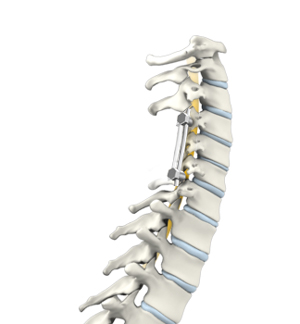
Posterior cervical laminectomy and fusion is a surgical procedure performed to decompress the spinal cord and nerve roots in the cervical region of the spine.
Know MoreCervical Laminoplasty
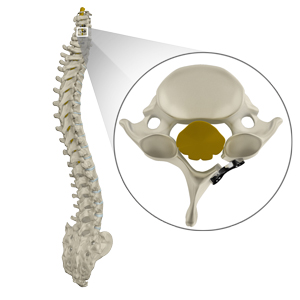
A cervical laminoplasty is an operative procedure that involves reshaping/repositioning the bone at the neck region (cervical spine) to relieve excess pressure on the spinal nerves.
Know MoreCervical Corpectomy and Strut Graft
The cervical spine comprises the first 7 vertebrae of the spinal column. The vertebrae are separated from one another by shock absorbing pads called intervertebral discs. Over time, the discs can become worn out resulting in neck pain.
Know MoreMinimally Invasive Cervical Discectomy
A cervical discectomy is an operative procedure which relieves pressure on the spinal nerves and/or spinal cord by removing the total or a part of the damaged intervertebral disc.
Know MoreAnterior Cervical Discectomy and Fusion
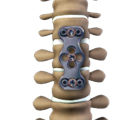
Anterior cervical discectomy with fusion is an operative procedure to relieve compression or pressure on nerve roots and/or the spinal cord due to a herniated disc or bone spur in the neck.
Know MoreAnterior Cervical Discectomy
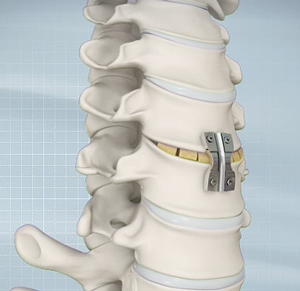
Anterior cervical discectomy is an operative procedure to relieve pressure or compression on the nerve roots and/or the spinal cord because of a herniated disc (damaged disc) or a bone spur.
Know MoreCervical Spine Fusion
Your spine consists of a spinal cord supported by a series of interlocking bones called vertebrae. The cervical spine is the upper part of the spine situated in the neck region.
Know More
Thoracic Treatments
Thoracic Corpectomy
Thoracic corpectomy is a procedure performed to relieve pressure on a nerve at the thoracic region (upper and middle back) by removing the source of the compression.
Know MoreThoracic Discectomy
The human spine provides support to the body allowing you to stand upright, bend, and twist. The spine can be broadly divided into cervical, thoracic and lumbar spine.
Know MoreThoracic Spine Decompression
Thoracic spine decompression is a procedure to relieve pressure on the spinal nerves in the middle portion of the back. Spine decompression surgery is indicated in treating spinal stenosis.
Know MoreThoracic Vertebroplasty
Osteoporosis is a “silent” disease characterized by weakening of bones, making them more susceptible to fractures, typically in the hip and spine. Elderly people and especially post-menopausal women are at greater risk of developing osteoporosis.
Know MoreThoracic Spinal Fusion
Thoracic spine fusion is a surgical procedure in which two or more bones (vertebrae) of the thoracic spine are joined together to eliminate the movement between them.
Know More
Lumbar Treatments
Posterior Lumbar Fusion
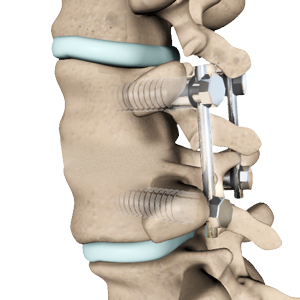
Spinal fusion, also called arthrodesis, is a surgical technique used to join two or more vertebrae (bones) within the spine. Lumbar fusion technique is the procedure of fusing the vertebrae in lumbar portion of the spine (lower back).
Know MoreLumbar Discectomy
The lower back or lumbar region is often the site of pain due to its high mobility and weight bearing. Spongy discs present between the vertebral bones of the spine help cushion the spine during stress and movement.
Know MoreLumbar laminectomy
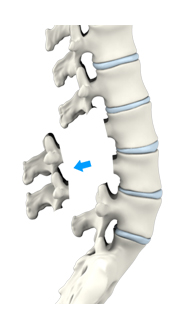
Lumbar laminectomy, also known as decompression laminectomy, is a spinal surgery done to relieve excess pressure on the spinal nerve(s) in the lumbar (lower back) region.
Know MoreLumbar Foraminotomy
The spine is surrounded and protected by vertebral bones stacked one on top of the other. Between adjacent vertebrae are spaces called neural foramen through which spinal nerves pass to communicate with the rest of the body.
Know MoreLumbar Fusion
Spinal fusion, also called arthrodesis, is a surgical technique used to join two or more vertebrae (bones) within the spine. Lumbar fusion technique is the procedure of fusing the vertebrae in lumbar portion of the spine (lower back).
Know MoreLumbar Decompression
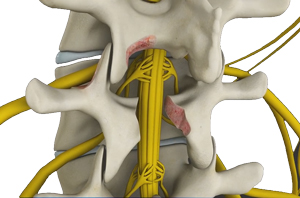
The spinal cord is protected by a bony column of vertebral bones, arranged one above the other. Injury or wear-and-tear can cause parts of the vertebrae to compress the nerves of the spinal cord, leading to pain, numbness or tingling in the part of the body that the nerve supplies.
Know MoreLumbar Sympathetic Block
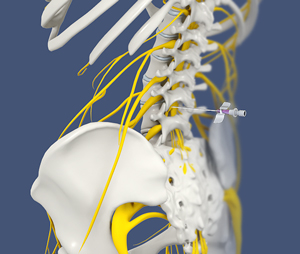
Sympathetic nerves, located in the lower spine, control basic functions such as regulating blood flow.
Know MoreTransforaminal Lumbar Interbody Fusion

Transforaminal lumbar interbody fusion (TLIF) is a type of spinal fusion procedure in which bone graft is placed between the affected vertebrae in the lower back (lumbar) region through an incision on the patient’s back.
Know MoreLumbar Endoscopic Discectomy
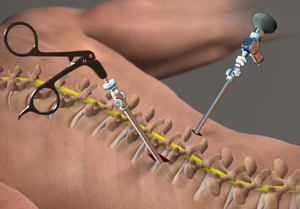
The lower back or lumbar region is often the site of pain due to its high mobility and weight bearing. Spongy discs present between the vertebral bones help cushion the spine during stress and movement.
Know MorePosterolateral Lumbar Fusion
Posterolateral lumbar fusion is a surgical technique that involves correction of spinal problems from the back of the spine by placing bone graft between segments in the back and leaving the disc space intact.
Know MoreLower Back (Lumbar) Surgery
Low back pain is one of the most common health problems experienced by most individuals, at different phases of their lives.
Know MoreLumbar Corpectomy and Fusion
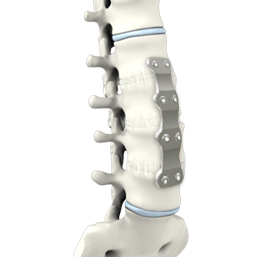
Anterior Lumbar Corpectomy and Fusion is a surgical technique performed to remove the vertebral bone or disc material between the vertebrae to alleviate pressure on the spinal cord and spinal nerves (decompression) in the lumbar (lower back) region.
Know MoreLumbar Foraminotomy, Facetectomy
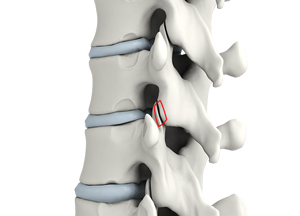
The vertebrae (spinal bones) have openings known as neuroforamen on either side for the passage of spinal nerves. The neuroforamen are surrounded by tiny joints known as facet joints, present in pairs at the back of each vertebra, which connect and stabilize them together.
Know MoreLumbar Interbody Fusion
Lumbar Interbody Fusion (LIF) surgery is a surgical technique involving the removal of the damaged intervertebral disc, and the insertion of a bone graft into the disc space created between the two adjoining vertebrae.
Know MoreMinimally Invasive Lumbar Surgery
Minimally invasive lumbar surgery is an alternative to open lumbar surgery that allows the surgeon to access the spine through smaller incisions.
Know MoreMinimally Invasive Lumbar Discectomy
Lumbar discectomy is a spinal surgery that involves removal of damaged intervertebral disc to relieve pressure on the spinal nerves (decompression) in the lumbar (lower back) region.
Know MoreAnterior Lumbar Corpectomy and Fusion

Anterior Lumbar Corpectomy and Fusion is a surgical technique performed to remove the vertebral bone or disc material between the vertebrae to alleviate pressure on the spinal cord and spinal nerves (decompression) in the lumbar (lower back) region.
Know MoreAnterior Lumbar Interbody Fusion
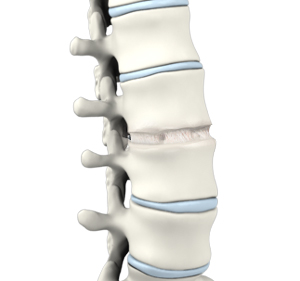
Anterior lumbar interbody fusion (ALIF) is a surgery performed to correct the spinal problems in the lower back. The surgery can be implemented either as an open surgery or minimally invasive technique.
Know MorePosterior Lumbar Interbody Fusion
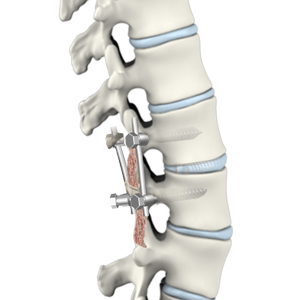
Spinal fusion is a surgical technique used to join two or more vertebrae in the spine and to minimize the pain caused by movement of these vertebrae.
Know MoreMinimally Invasive TLIF
Our spine is made up of small bony segments called vertebrae. These vertebrae are categorized into cervical or neck vertebrae, thoracic (upper back) and lumbar (lower back). Cushioning discs present between each vertebra act as shock absorbers.
Know More
General Treatments
Spinal Fusion
Spinal fusion is the surgical technique of combining two or more vertebrae. Fusion of the vertebrae involves insertion of secondary bone tissue obtained either through auto graft (tissues from the same patient) or allograft (tissues from the other person) to augment the bone healing process.
Know MoreSpinal Decompression
Spinal decompression is treatment to relieve pressure on one or many “pinched nerves” of the spinal column. It can be achieved either surgically or by non-surgical methods.
Know MoreVertebroplasty
Osteoporosis is a “silent” disease characterized by weakening of bones, making them more susceptible to fractures, typically in the hip and spine. Elderly people and especially post-menopausal women are at greater risk of developing osteoporosis.
Know MoreKyphoplasty
Balloon kyphoplasty is a spine surgery that relieves back pain caused by a vertebral compression fracture. Osteoporosis (bone disease) is the primary cause of vertebral compression fractures.
Know MoreSpine Osteotomy
Spine osteotomy is a surgical procedure in which a section of the spinal bone is cut and removed to allow for correction of spinal alignment.
Know MoreScoliosis Treatment
Scoliosis is a condition characterized by abnormal curvature of the spine causing a deviation to one side. It causes a physical deformity making the spine look like the letter “C” or “S” instead of the letter “I”.
Know MoreSpinal Cord Stimulator
Back and leg pain often have causes which either improve on their own or which the surgeon can correct. Sometimes there is no easily correctable cause of the pain.
Know MoreSpine Tumor Surgery
Spine tumor is the abnormal growths of uncontrolled tissues or cells in and around the spinal cord. Tumors can either be cancerous (malignant) or non-cancerous (benign).
Know MoreMinimally Invasive Spine Surgery
MISS is the latest advanced technology available to perform spinal surgeries through small, less than one inch long, incisions.
Know MoreEndoscopic Spine Surgery
Endoscopic spine surgery is a minimally invasive spine surgery that uses specialized video cameras and instruments to remove the herniated disc through very small incisions.
Know MoreSpine Deformity Surgery
The Spine or backbone provides stability to the upper part of our body. It helps to hold the body upright. It consists of several irregularly shaped bones, called vertebrae appearing in a straight line.
Know More
Non-surgical treatments for spine conditions
Epidural Steroid Injections
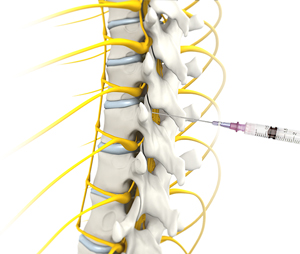
Epidural spinal injection is a non-surgical treatment option utilized for relieving back pain. Spine degenerative conditions such as herniated disc, spinal stenosis and many others may induce back pain due to the compression of the associated spinal nerves.
Know MoreFacet Injection
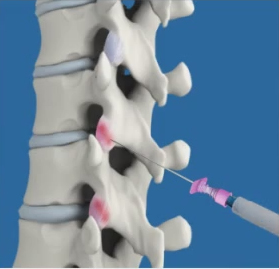
The facet joints are the tiny joints situated at the upper and lower part of each vertebra connecting one vertebra to the other.
Know MoreRadiofrequency Ablation
Radiofrequency ablation (RFA) also called rhizotomy or neurotomy is a novel non-surgical technique of treating pain.
Know MoreSacroiliac Joint Injections
Sacroiliac joints (SI joint) are joints in the lower back region, located where the sacrum and ilium bones conjoin.
Know MoreMedial Branch Block Injections
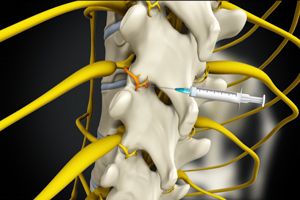
Medical branch block is an injection of a local anesthetic near the medial branch nerves to temporarily block the pain signal carried from the facet joints of the spine to the brain.
Know MoreLumbar Spinal Bracing
Lumbar braces are external devices used to restrict movement of the lumbar spine and provide support and stability to the lower back region to relieve back pain and promote healing, after surgery or injury.
Know MoreLumbar Spinal Injections
Lumbar spine injections are utilized in the assessment and treatment of low back pain. These injection procedures are valuable in determining whether structures are the source for low back pain.
Know MoreCervical/Lumbar Traction
Cervical/lumbar traction is a therapy that stretches the spine to relieve pressure on compressed nerves and stretch tight muscles, to treat back and neck pain. It may also be used for realigning the spine in cases of dislocation.
Know MoreThoracic Spinal Injection
Thoracic facet joints are tiny joints at each section of the spine that impart stability and facilitate guide motion. The facet joints can turn out to be painful due to arthritis of the spine, a back injury or mechanical strain.
Know MorePiriformis Muscle Injection
The piriformis muscle is present in the buttocks, connecting the sacrum to the outer surface of the hip. This muscle enables us to walk and run. The sciatic nerve is a thick, long nerve passing through or below the piriformis muscle.
Know More
Others
Nutrition and your Spine
Nutrients are the chemical components present in food which provide energy for carrying normal physiological functions and aid in metabolic processes of the body.
Know MoreMedications
Medications play an effective role in the treatment of back or neck pain. Your doctor may prescribe several medications to help reduce pain and associated symptoms that are caused by unhealthy spinal conditions or deformities.
Know MorePossible Complications of Spinal Surgery
Possible complications may occur before surgery, during surgery and after surgery.
Know MorePost-op Instructions
Your surgeon may recommend a few specific post-operative instructions following spinal surgery. You should follow the instructions of the surgeon to aid in faster recovery with optimum results.
Know MoreSpine Rehabilitation
Dysfunction of the spine can be severely debilitating to one’s ability to perform activities at both home and work.
Know MoreHealthy Back Tips
Back and neck pain are the most common health problems experienced by most people, at some point of their lives.
Know MoreProper Lifting
Lifting heavy weights and improper lifting of weights is one of the foremost causes for neck pain or lower back pain.
Know More











